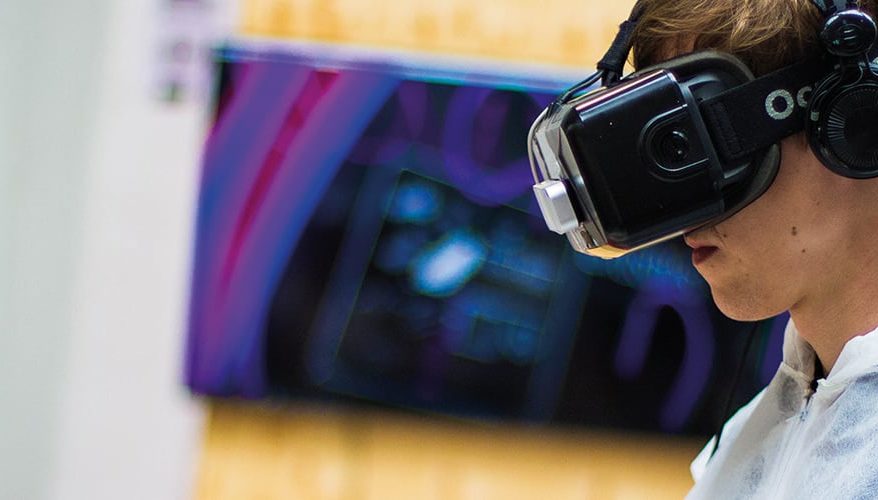
Virtual reality is a hotly-discussed topic, but so far, the majority of us think of it as a fun, superfluous innovation that goes hand-in-hand with gaming and entertainment. Many of us can’t imagine virtual reality in our workplaces, and even if we can, it almost seems unnecessary – like playful extras to make your office appear on-trend.
Seventy seven percent of virtual reality executives agree that Virtual Reality technology will impact the gaming industry most.
However, as many businesses are learning, the opposite is true. There are endless ways that virtual reality technology can improve our working lives, with a wide range of uses across many different industries. Here are some examples, both currently in use and expected in the near-future, of ways the average workplace can effectively utilise virtual reality:
Using virtual reality to visualise products
Beauty giant L’Oréal outgrew their former premises in 2017, instead moving to a new, smart office space on Manhattan’s West Side. While these new offices hold many examples of embracing innovation and up-to-date workplace design, arguably their most impressive new addition is the virtual reality room. Designed to save merchandisers precious time, the room can simulate the experience of a real store, allowing staff and retail partners to physically see what new L’Oréal products might look like on the shelf.
Connecting colleagues and clients
An obvious, but often overlooked use of virtual reality is the VR-based meeting. One step further than conference calls or video meetings, virtual reality allows meeting attendees feel like they’re in the same room, no matter where they’re located. The hope is that virtual reality technology will enable us to feel more comfortable and connected with our colleagues and clients, even if they reside in a completely different continent.
Improving the customer service experience
Technological innovation has massively driven the recent changes in customer service, with a view to improving the connection between businesses and customers – think chatbots, 24/7 support and text messaging or social media functionality replacing the traditional complaints phone call.
As we look for new ways to enhance the connection between seller and buyer, particularly when it comes to keeping a customer base happy, the abilities of virtual reality may open the door that much wider, and help us maintain good relationships with our clients.
An immersive experience to enhance collaboration
Again, the personal feel that virtual reality can achieve will likely be coming up trumps in the near future, and helping us improve our collaboration levels to boot. Freelancers will be able to feel a part of the office, and talk ‘face-to-face’ with their colleagues, while staff located in the same workplace can utilise the immersive experience of VR to plunge themselves into the ideas they’re working on together – from visualising new designs, to ‘walking through’ important sites. The possibilities are quite possibly endless!
Increasing remote working
The real jewel in virtual reality’s crown may be its ability to put us in a different room, even if we’re sat at home. Virtual reality will likely enable an improved remote working experience, eliminating the current arguments against the practise. Employers will no longer have to worry about staff relationships falling by the wayside if their employees decide to work from home, as working from home will entail putting on a VR headset, and thus ‘showing up to the office’!
While this is likely a bit further in the future than other examples, it is a game changer, and will benefit everyone involved – from employers saving office space and the associated costs, to employees avoiding long commutes, the high cost and inconvenience of travelling.
Matthew Shephard I Business Development Manager I Condeco



